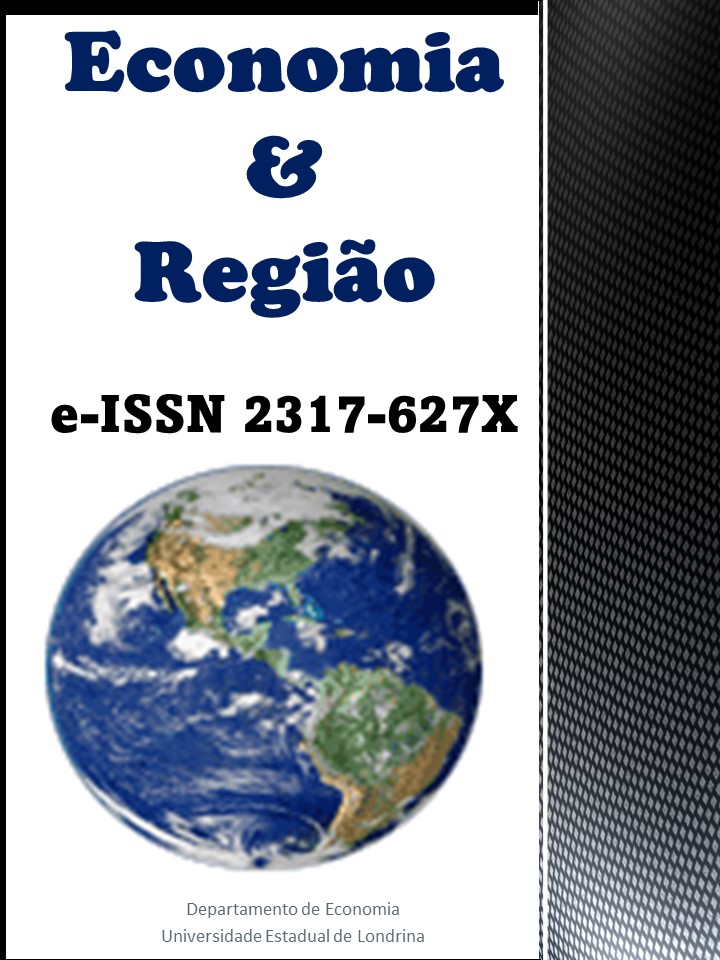The competitiveness of the Brazilian coffee complex in the international market from 1998 to 2019
DOI:
https://doi.org/10.5433/2317-627X.2022v10n1p123Keywords:
Coffee, Competitiveness, ExportAbstract
Brazil is the world's largest producer and exporter of coffee beans. However, its participation in the world market for the coffee complex decreased from 20% to 14% between 1998 and 2019. This fall can be attributed to the entry of new product countries, the tariff barriers imposed on Brazil and the concentration of Brazilian exports of the complex in products and destinations with low demand growth. Thus, this work analyzed the competitiveness of Brazilian exports of the coffee complex between 1998 and 2019 using the Constant Market Share method. The results indicated that Brazil lost competitiveness, exported products with low growth in demand and directed its exports to countries where its demand grew at a lower rate than the world. This result can be attributed to the tariffs imposed on Brazilian processed products, the costs of production, the lack of interest of major world players in establishing processing industries in the country, in addition to the low Brazilian investment in the promotion of coffee in the world market. To increase Brazilian participation, the country must adopt direct marketing actions to the consumer and encourage the development of export-oriented processing industries.Downloads
References
BUTURAC, G.; MIKULIC, D.; PALIC, P. Sources of export growth and development of manufacturing industry: empirical evidence from Croatia. Economic Research-Ekonomska Istraživanja, v. 32, n. 1, p. 101-127, 2019
CARVALHO, JULLYANA NAIR DE.Desempenho das exportações de café solúvel do Brasil. 2014. 92 f. Dissertação (Mestrado em Administração) – Universidade Federal de Lavras, Lavras, 2014.
FAGERBERG, J.; SOLLIE, G. The method of constant market shares analysis reconsidered. Applied Economics, London,v. 19, n. 12, p. 1571-1583, 1987.
GILBERT, J. Analytical approaches to evaluating preferential trade agreements.Bangkok: United Nations, 2017. 111 p. Disponível em: https://www.unescap.org/sites/default/files/Analytical%20Approaches_Low%20resolution.pdf. Acesso em: 7 jun. 2019.
GILBERT, J.; MUCHOVÁ, E. Export competitiveness of Central and Eastern Europe since the enlargement of the EU. International Review of Economics & Finance, v. 55, p. 78-85, May 2018.
INNOCENTINI, M. Política brasileira do agronegócio do café: desafios e propostas. Revista de Política Agrícola, Brasília, v. 24, n.2, p. 5-16, abr./maio/jun., 2015.
IBGE - INSITUTO BRASILEIRO DE GEOGRAFIA E ESTATÍSTICA. Censo Agropecuário 2017. Disponível em: http://www.sidra.ibge.gov.br/pesquisa/censo-agropecuário/censo-agropecuario-2017. Acesso em: 4 set. 2020.
IBGE - INSITUTO BRASILEIRO DE GEOGRAFIA E ESTATÍSTICA. Pesquisa Agrícola Municipal. 2018. Disponível em: http://www.sidra.ibge.gov.br/pesquisa/pam/tabelas Acesso em: 4 set. 2020.
IPEA - INSTITUTO DE PESQUISA E ECONÔMICA APLICADA. Commodities - café (Brasil): cotação internacional. Disponível em: http://www.ipeadata.gov.br. Acesso em: 6 set. 2020
LEAMER, E. E.; STERN, R. M. Quantitative international economics.Boston: Allyn and Bacon, 1970.
LIMA, M. G. D.; LÉLIS, M. T. C.; CUNHA, A. M. Comércio internacional e competitividade do Brasil: um estudo comparativo utilizando a metodologia Constant-Market-Share para o período 2000-2011. Economia e Sociedade, Campinas, v. 24, n. 2, p. 419-448, ago. 2015.
NISHIJIMA, M. SAES, M.S.M.; POSTALI, F.A.S. Análise de concorrência no mercado mundial de café verde. Revista de Economia e Sociologia Rural, Piracicaba, v. 50, n. 1, p. 69-82, jan/mar. 2012.
ORGANIZAÇÃO INTERNACIONAL DO CAFÉ – OIA. Avaliação da sustentabilidade econômica da cafeicultura. 15 set. 2016. Disponível em: http://www.ico.org. Acesso em: 1 set. 2020
RICHARDSON, J. D. Constant-market-shares analysis of export growth. Journal of International Economics, v. 1, n. 2, p. 227-239, May 1971.
UNITED NATIONS. UN Comtrade Database:exportações e importações mundiais 2019. Disponível em: https://comtrade.un.org/data/. Acesso em: 8 ago. 2019.
WANG, Z. et al. Decomposition of the factors influencing export fluctuation in China's new energy industry based on a constant market share model. Energy Policy, v. 109, p. 22-35, Oct. 2017
WITS - WORLD INTEGRATED TRADE SOLUTION.Trade data.Disponível em: http://wits.worldbank.org/WITS/WITS/AdvanceQuery/RawTradeData/QueryDefinition.aspx?Page=RawTradeData. Acesso em: 1 set. 2020.
Downloads
Published
How to Cite
Issue
Section
License
Economia & Região adota a Licença Creative Commons Attribution CC-BY 4.0 International, portanto, os direitos autorais relativos aos artigos publicados são do(s) autor(es), que cedem à Revista Economia & Região o direito de exclusividade de primeira publicação.
Sob essa licença é possível: Compartilhar - copiar e redistribuir o material em qualquer suporte ou formato. Adaptar - remixar, transformar, e criar a partir do material, atribuindo o devido crédito e prover um link para a licença e indicar se mudanças foram feitas.














